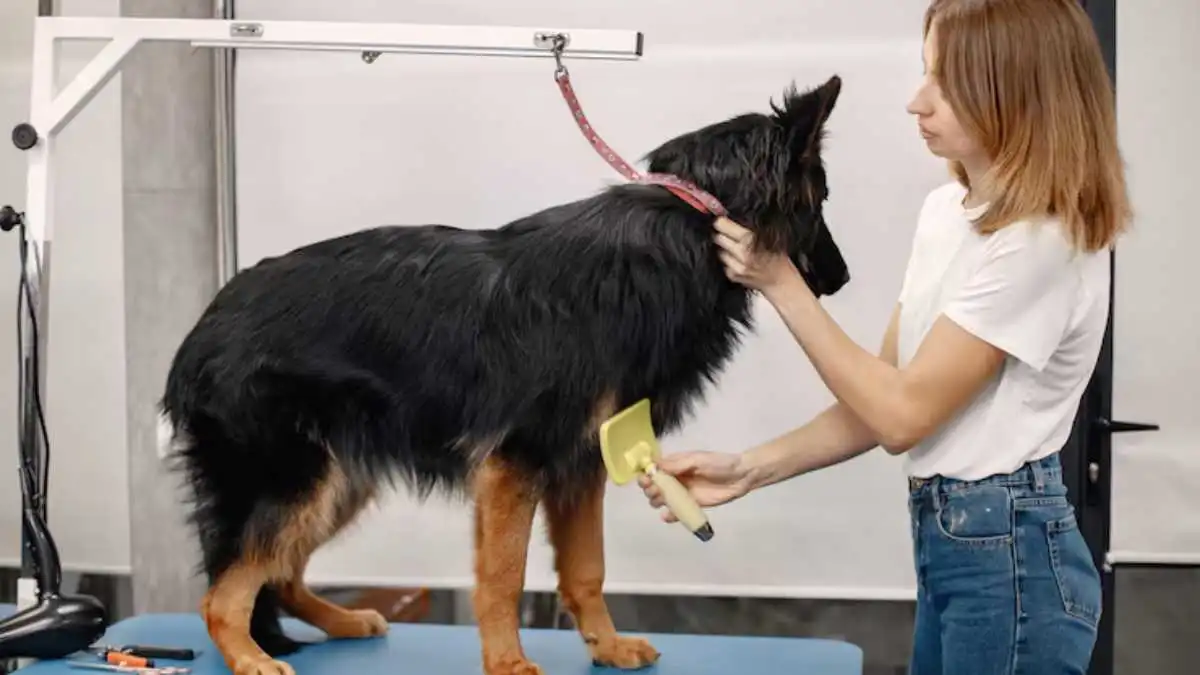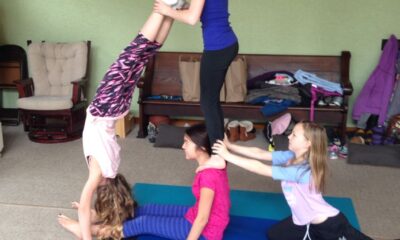GENERAL
How to Prepare Your Dog for Grooming, Boarding, or Daycare: A First-Timer’s Guide

Introduction
Introducing your dog to a new experience—whether it’s grooming, boarding, or daycare—can feel exciting and a little nerve-wracking. You want to make sure your pet is safe, comfortable, and happy throughout the process, but if you’ve never used these services before, you might not know where to begin.
Dogs, like people, thrive with routine and familiarity. Sudden changes can cause anxiety, especially when it involves new environments or unfamiliar handlers. Fortunately, the right preparation can make a huge difference in how your dog adapts to grooming appointments, stays at a boarding facility, or starts socializing at daycare.
Happy Dogs welcomes pups of all breeds and sizes to enjoy grooming, boarding, and daycare in a safe and positive environment. To help first-time pet parents feel confident, this guide offers practical tips to ensure your dog has a smooth and successful experience with any new service.
Table of Contents
Preparing for Dog Grooming: Comfort Starts at Home
Dog grooming is an important part of your pet’s overall health and hygiene. However, for many dogs—especially puppies or rescues who haven’t had regular grooming—the experience can feel overwhelming at first.
Begin with Desensitization
Introduce your dog to grooming tools at home before their appointment. Use a soft brush, touch their paws and ears gently, and reward calm behavior with treats. This builds positive associations with the sensations they’ll encounter during grooming.
If your dog is sensitive to noise, try turning on a hair dryer nearby at a low setting so they can get used to the sound. Some pets may also benefit from short mock grooming sessions where you mimic the process without using actual tools.
Know the Basics of Grooming Needs
Not all dogs require the same grooming services. Long-haired breeds often need trimming and de-matting, while short-haired breeds may only require bathing, nail trimming, and ear cleaning. Talk to your grooming provider about your dog’s breed, coat condition, and any skin sensitivities.
Before your first appointment, ensure your dog is up to date on vaccinations and has had a chance to relieve themselves. A light walk beforehand can help release excess energy, making them calmer during the session.
Getting Ready for Dog Boarding: Setting Up for Success
Leaving your dog at a boarding facility for the first time can be an emotional experience—for both of you. However, a well-prepared boarding stay can provide a safe, stimulating environment for your dog while you’re away.
Start with a Trial Visit
If your boarding provider allows it, arrange a short visit or an overnight trial. This helps your dog become familiar with the staff, layout, and routine. It also gives you insight into how they respond to being away from home.
Even a few hours of playtime or daycare ahead of time can help build familiarity, making the longer boarding stay less stressful.
Pack Familiar Items
Most facilities recommend bringing your dog’s own food to avoid stomach upset. You can also pack a favorite toy, blanket, or item with your scent to provide comfort during their stay. Include feeding instructions and let staff know about any medical conditions, allergies, or behavioral quirks.
Make sure your dog’s ID tags and microchip information are up to date. For the safety of all dogs in group settings, boarding facilities often require proof of core vaccinations, including rabies, distemper, and Bordetella.
Introducing Your Dog to Daycare: Socialization at Their Pace
Dog daycare is a great option for dogs who need exercise, social time, or company during the day. It’s especially beneficial for high-energy breeds or pets with separation anxiety. But like any group setting, it’s important to ease your dog into it gradually.
Assess Your Dog’s Readiness
Not every dog is a fit for daycare right away. Puppies should be fully vaccinated and able to interact safely with other dogs. Adult dogs should be socialized, respond well to basic commands, and show no aggressive tendencies in group settings.
Many daycare providers begin with a temperament evaluation. This short session helps assess your dog’s comfort with other dogs, play styles, and any signs of stress or reactivity.
Build Positive Routines
Start with shorter daycare visits and gradually increase the length of time. Just like with children at school, a slow introduction often leads to better long-term comfort. After a few visits, most dogs settle into the routine and begin looking forward to playtime with their new friends.
Remember that socialization doesn’t mean constant interaction. Dogs are allowed to rest, take breaks, or enjoy solo time if needed. Communicate with your daycare provider about your dog’s personality and any observations from previous visits.
Tips to Support All Transitions
Whether it’s grooming, boarding, or daycare, preparation and communication are key to making the experience successful for your dog.
Keep Your Own Emotions in Check
Dogs are highly attuned to our emotions. If you’re anxious or uncertain, your pet may mirror that stress. Speak calmly and confidently, use positive reinforcement, and avoid prolonged goodbyes. Trust that your dog is in capable hands.
Maintain a Predictable Schedule
Consistency helps dogs feel secure. Try to schedule appointments and drop-offs during times when your dog is naturally more relaxed, such as mid-morning after a walk. Stick to regular feeding and potty routines to minimize disruption.
Follow Up with Feedback
After each service, take note of how your dog behaves. Are they tired but content? Nervous or withdrawn? Energetic and excited? Sharing these insights with your provider helps tailor future visits and ensures a better fit for your dog’s needs.
Happy Dogs encourages open communication with pet parents to help create a safe and enjoyable environment for every dog, no matter their age or experience level.
Understanding the Benefits Over Time
The more familiar your dog becomes with grooming, boarding, and daycare, the more they’ll benefit from the routine. Regular grooming improves coat and skin health, while daycare provides social enrichment and exercise. Boarding offers peace of mind for pet parents and a consistent care structure for dogs during travel.
As your dog grows more comfortable, they’ll begin to associate these services with positive experiences. This not only improves their well-being, but also builds trust between you and your care provider.
Conclusion
Introducing your dog to new environments like grooming salons, daycare centers, or boarding facilities requires thoughtful preparation. From familiarizing them with grooming tools to easing them into social play, each step builds a more confident, relaxed pet—and a more stress-free experience for you.
Every dog is different, but with patience, planning, and clear communication, even first-timers can transition smoothly into these essential services. Whether you’re heading out of town or simply looking to support your dog’s daily routine, the right preparation makes all the difference.
Happy Dogs is proud to provide compassionate, professional dog grooming, boarding, and daycare services that meet each pet where they are—and help them grow into happy, well-adjusted companions.
-

 GENERAL2 months ago
GENERAL2 months agoUncovering the World of кинокрадко: The Dark Side of Film Piracy
-

 GENERAL1 month ago
GENERAL1 month agoUnveiling the Art of преводсч: How Translators Bridge Language Barriers
-

 YOGA1 year ago
YOGA1 year ago4 Person Yoga Poses for Beginners
-

 GENERAL2 months ago
GENERAL2 months agoThe Journey of iamnobody89757: From Anonymous User to Internet Sensation


























